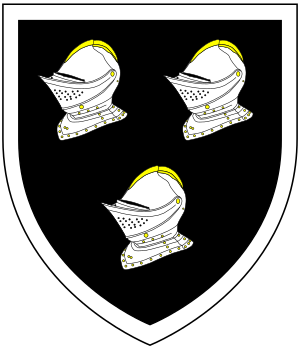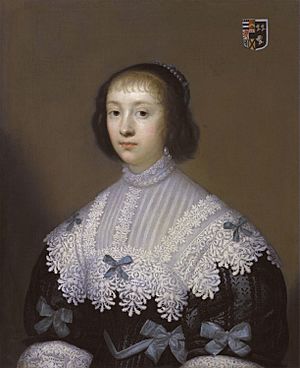William Holliday (merchant) facts for kids
William Holliday (born around 1565 – died February 14, 1624) was a very rich merchant in London. He also led a big trading company called the East India Company.
| Top - 0-9 A B C D E F G H I J K L M N O P Q R S T U V W X Y Z |
William Holliday's Early Life
William Holliday was likely born in a place called Gloucestershire. We don't know much about his parents. However, we do know he was a cousin of Sir Leonard Holliday. Sir Leonard later became the Lord Mayor of London, which is a very important job.
William Holliday's Career and Achievements
William moved to London, probably in the 1580s. There, he learned the trade of a mercer. Mercers were people who dealt with textiles and fabrics. This was part of the Worshipful Company of Mercers, a powerful group in the city.
In 1594, William joined an important sea trip to the Azores. During this trip, a large Portuguese ship was sunk. William did very well as a mercer. He also became involved with the Honourable East India Company. His cousin, Sir Leonard, had helped start this company.
- In 1616, William was chosen as a 'committee' member, which means he became a director of the East India Company.
- In 1617, he became the Master of the Mercers Company. He was also chosen as a sheriff for London that year.
- In February 1618, William became an alderman of the City. This showed how important and successful he was.
William's success was also clear in the marriages of his two daughters. In 1619, his daughter Anne married Sir Henry Mildmay. This marriage was arranged by the Duke of Buckingham, who was following King James's wishes. In 1621, William was chosen to be the governor of the East India Company. He held this important job for the last three years of his life.
William Holliday's Family Life
Around 1600, William Holliday married Susan Rowe. Her father, Henry Rowe, was also a very important person. He was part of the Worshipful Company of Ironmongers and later became Lord Mayor of London. Susan's grandfather had also been Lord Mayor.
William and Susan had two daughters:
- Anne Holliday (born in 1602): She married Sir Henry Mildmay. He was in charge of the King's jewels from 1620 to 1649.
- Margaret Holliday (born around 1603): She was the younger daughter. In 1620, she married Sir Edward Hungerford. Their beautiful tomb can still be seen in a chapel at Farleigh Hungerford Castle.
William Holliday's Death
William Holliday passed away on February 14, 1624. He was buried near St Lawrence Jewry church in London. He left behind a large amount of money and properties.
Many years later, his daughter Margaret Hungerford had a monument built for William, Susan, and Anne. This monument was in St Lawrence Jewry church. Sadly, it was badly damaged during an air raid in 1940.
William Holliday's Coat of Arms
Just before he died in 1624, William Holliday received a special design called a coat of arms. This design was given to him by the College of Arms. His coat of arms was a black shield with three silver helmets on it, all inside a silver border. His crest, which is a design often placed above the shield, was a half-lion holding an anchor. This lion crest can be seen at the feet of Margaret Hungerford's statue at Farleigh Castle.
William's coat of arms looked quite similar to the one given to his cousin, Sir Leonard Holliday, in 1605.



